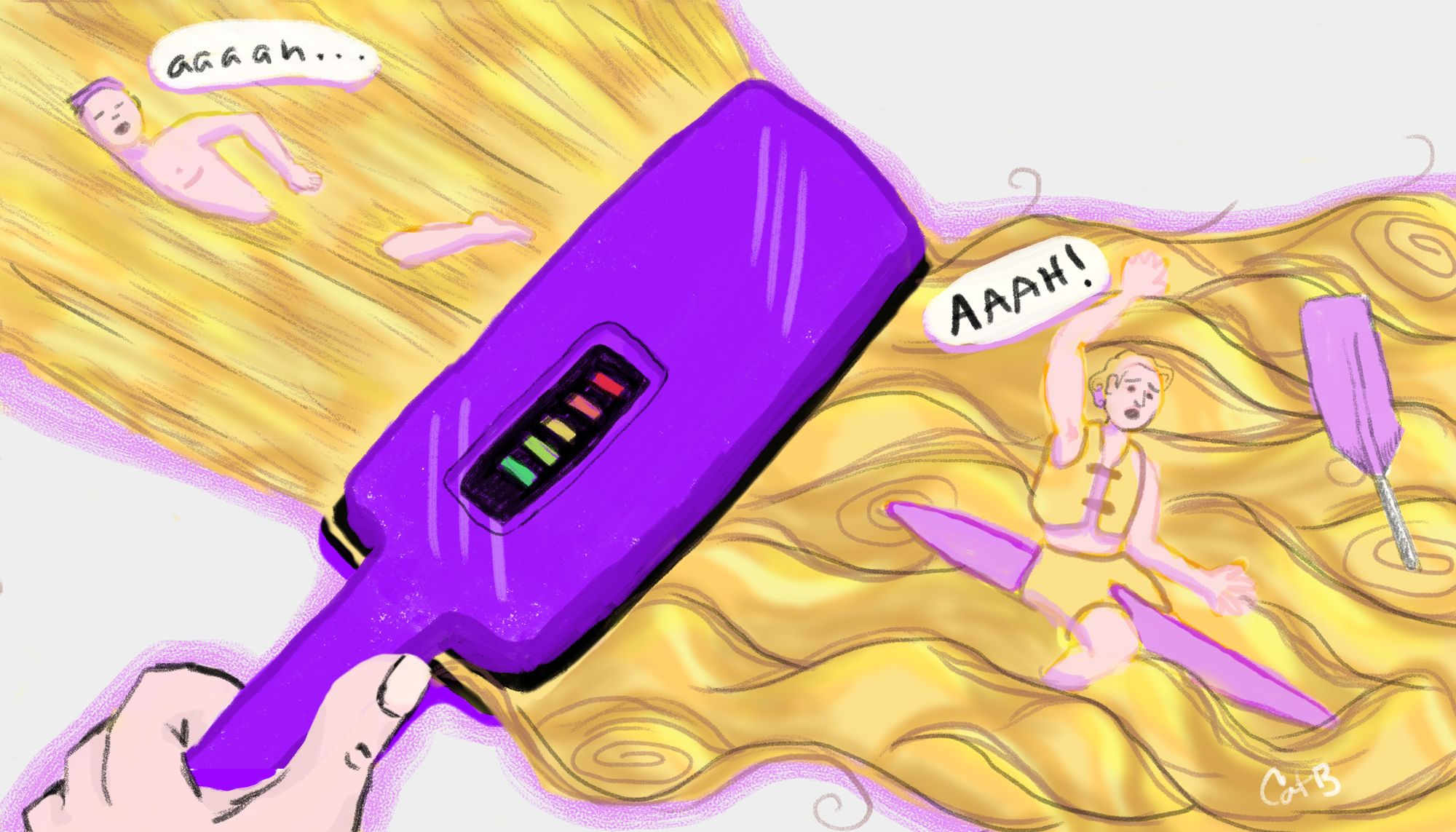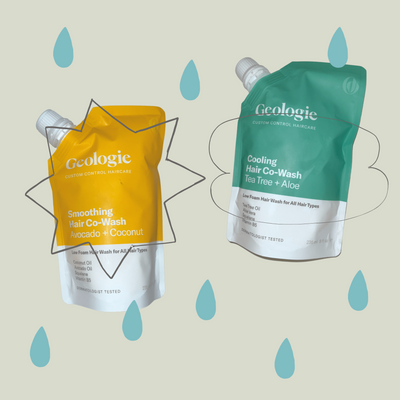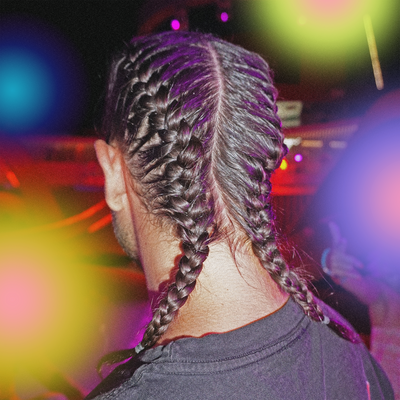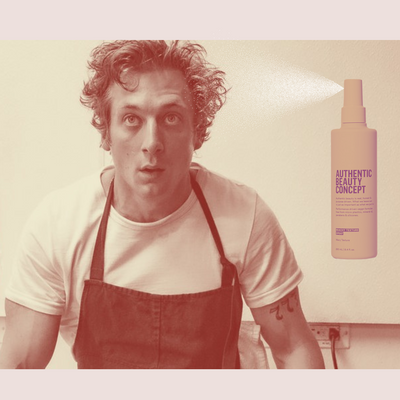
I’m going to get this humble brag out of the way: I’ve always been told that I have great hair.
When it’s long(ish), my mane is like a mass of gently ambling waves, like sunset on a South Carolina beach, somewhat wild, with natural body and curl. My entire life I’ve heard things like, “you have great texture” and “that wave!” mostly from older women, including my mom and professional hairstylists.
But I didn’t care about any of that. In fact, I would have given anything to get rid of that hair.
SEE ALSO: How I learned to forgive my bullies at Conde Nast
Culturally, our attitudes toward curly hair are muddled and steeped in dichotomy. In art and literature it can symbolize youth, innocence and freedom (think Botticelli’s angels or the greek God of beauty and youth Apollo, both typically depicted with golden curls). It can also symbolize a fall from grace, outsider status and ferality (have you ever heard the phrase “the devil’s curly hair”?). To add even more confusion, curly hair can be a depiction of courage and strength (like Hermione Granger or Merida from Disney’s Brave). Practically, curly hair is often thought of as unprofessional or unkempt, especially among men, as longer hair has for generations been frowned upon in the workplace.
Furthermore, curly hair has entered our culture vernacular as un-American. Think of the “All-American” guy or girl – they probably have straight, blonde hair the color of corn. Hollywood, too, typically uses curly hair to denote a certain kookiness. Think of the best friend to the leading lady (Judy Greer in The Wedding Planner, for instance) or the funny stoner foil to the hearthrob (Seth Rogan in almost every movie he’s in).
For decades, the fight against my hair would continue. Hair would become a symbol of my inadequacy.
I’m not saying I was thinking about all of these cultural signifiers at age 12. All I wanted was to fit in.
When I was in fifth grade, the coolest guy in my class had a bowl cut, stick straight and bright blonde. So naturally, I wanted one, too. I asked my barber for a bowl cut and instead of looking like one of the popular guys or, even better, a young Leonardo DiCaprio, I was Toad from Super Mario. It was puffy, a mushroom cloud of frizz, and my bangs certainly didn’t effortlessly fall just short of my eyes like I had pictured. It is the first memory I have of the extreme disappointment I would start to see regularly when I looked in the mirror.
I remember taking a picture of Carson Daly (then the host of TRL) to my barber a few years later. He had his bangs spiked up in the front and a short crop on the sides. I wanted to capture a little bit of his cool and thought that the style was short enough to hide my curls. My barber, who was not particularly in tune with celebrity culture, essentially gave me a buzz but left a fringe in the front. He also left the bangs too long, so when I spiked them up with LA Looks gel, they curled in on themselves, forming a jelly roll.
For decades, the fight against my hair would continue. Hair would become a symbol of my inadequacy. If I could change my hair, then maybe, just maybe I could change that feeling of otherness that I had so deep inside. Maybe for once in my life the cool group would let me sit with them at lunch or I would finally fit in with the lacrosse team or at the very least maybe they would just stop laughing at me when I walked through the hall. If I could join the ranks of the straight-haired jocks and spike-haired celebrities, then maybe I could transcend the idea that I didn’t belong.
In high school, I cycled through years of hair color experiments and copious amounts of hard gel (to spike my hair so stiffly that it couldn’t physically curl). When I moved to New York City for college I was still committed to doing everything I could to alter my hair. There was now a new world at my fingertips: a world of beauty supply stores, a Ricky’s on every corner, and the Internet.
That’s how I learned about chemical relaxer, the kind that really should only be used by professionals. I started to apply it to my strands in my small, dimly lit dorm bathroom. It was a technology that left my hair straight even in the dense humidity of a New York City summer, but also came with extreme dryness, breakage and tiny little burns along my hairline (even when I applied Vaseline beforehand, a tip I had learned from a message board). After a while my scalp became permanently scented with lye, the main ingredient in the relaxer, and it was that stench that finally got me to put down the chemicals.
Instead, I started to keep my hair very short – no need to relax hair less than half an inch long. In the summer, I would give myself buzz cuts with a cheap clipper I got on sale from Bed Bath & Beyond. I told myself it was to save money on haircuts, but really it was another way to keep the curls at bay.
After college, when I had become an assistant at a high fashion magazine, I remember my boss, referring to a colleague she didn’t get along with, saying to me, “Curly haired girls have no place in fashion.” It was a statement that burned itself into my brain forever.
When you have such internalized hate for your hair, every day can feel like a battle against the inevitable.
By then, I had learned about flat irons, and when one of the beauty editors at work gave me a tiny, one-inch thick blue one, I started to use it religiously, sometimes multiple times a day. I also kept a second one in my desk drawer in order to do touch-ups. I was terrified that my boss would find out that I was one of those curly-haired people who didn’t belong.
My work in fashion magazines, both as a fashion and grooming editor, eventually afforded me access to a stable of professionals who collectively gave me a tool belt of tricks: the best products to use, how to blow out my own hair like a professional, even complimentary straightening treatments that didn’t burn my scalp or leave my bathroom smelling like a chemical factory.
The refrain from these high-profile seasoned professionals was familiar – “look at that curl! It’s gorgeous!” But we all know that you don’t accept what you aren’t ready to hear. I insisted on styles that were best suited for straight hair, even against the advice of people I looked up to.
The metaphor (and irony) is not lost on me: a gay man, a happy and proud and married gay man at that, obsessed with making his hair straight. If hair can be the expression of your true self, a symbol of who you want to be and how you want the world to see you, it can also be a vessel that holds your deepest anxieties and fears. Our hair has the power to alter our mood, make us feel terrible or incredible, shy or invincible, scared or brave. When you have good hair, you feel like you can take on the world. But when you have such internalized hate for your hair, every day can feel like a battle against the inevitable.
But finally, something changed. I thought it was because of the recent fashion obsession with the seventies (designers like Tom Ford and Balmain showing curly-mopped models on the runway) or the much-needed conversations around inclusivity and embracing natural hair texture. I thought maybe it was the wild-child surfers and musicians I used as references for fashion stories over and over again. Basically, I thought it was a visual choice, a fashion trend I wanted to get in on.
The truth is, though, that I was tired. I am now over 30, and I am tired of running. So instead, I started to embrace the magic of my naturally, waved hair.
It was a chance encounter with editorial and celebrity stylist Patrick Kyle, who truly changed my attitude toward my hair. It helps that he has the exact hair that I want – a long-ish mane of waves and curls – and has a very similar hair texture to my own. Through his guidance and advice, I was able to put a real “face” to what I needed to do and I realized the importance of working with someone who has first-person experience with the type of hair you have. There is nothing that can compare to personal experience and his advice to me, based on his own hair, became invaluable.
He also told me something that would eventually replace that curly hair put-down from my old boss: “Nothing will ever look as good as your natural texture.” Mic drop. Once I started using this as my hair mantra, it was like the world opened to me.
Since I started this process, an interesting thing has started to happen. The “good hair” compliments started to come back in droves – and this time I’m actually listening to them. For the first time in my life, I have allowed them in, instead of dismissing them, and by doing so the self-critical voice has started to get a little quieter. I’ve not only embraced my hair but I’ve taken on the challenge of learning something new by listening to people that know more than me.
The road to self-acceptance can be long and the road to self-love even longer. But now with an open mind, and a supportive network of friends, I’m going to go with the flow and see where this wave takes me.






